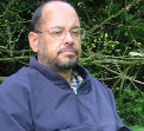The editors of Poui, the Cave Hill Literary Annual, “are happy to see that so many of our regular contributors continue to send us work” while at the same time they feel “it is good to find a number of new voices”. This helps to make the journal interesting to read because sometimes there are important discoveries and always a bounty in the contributions of those already known.

This kind of interest, issue after issue, continues in Poui Number 8, edited by Mark McWatt, Jane Bryce and Hazel Simmons-McDonald. All three are writers. McWatt is the most renowned among them and, by any measure, is an outstanding writer. As a poet, he is one of Guyana’s foremost artists and a major prize winner. Then his first book of fiction went on to win even more major prizes.
Jane Bryce, born in Tanzania, is a first class prose writer who has already published her first collection.
Hazel Simmons-McDonald is a St Lucian and a poet, as well as one of the regular contributors of verse to the literary annual. Her poetry is of interest here because she is already well established and acclaimed as a leader in the region in other careers, as an academic and a university administrator. Without her poems she would already have made more than a mark in public life, with them, she is acknowledged as a real poet accomplished in the craft of verse.
Poui describes Simmons-McDonald as “Professor of Applied Linguistics at the University of the West Indies, Cave Hill, and Pro Vice-Chancellor and Principal of the UWI Open Campus. She has published several English language texts for use at secondary and tertiary levels and, as part of the research programme in Creole Education, is preparing curriculum materials in French Creole for students from K to Grade VI. Her most recent publication, Exploring the Boundaries of Caribbean Creole Languages (co-authored by Ian Robertson) appeared in 2006”.

Her poem “Burnt Offerings” offers a multiplicity of interests. Because of Simmons-McDonald’s exploration of diction, images, suggestiveness and nuance through which phrases work in different directions and meanings suggest themselves. Very obviously, it is a Christian poem offered as a hymn to her God in a way reminiscent of John Donne. Nevertheless, this is Simmons-McDonald, not Donne, as she pursues her own preoccupations, but presents a poem in which she offers up herself as a sacrifice to God in the way both “ancestors” and priests of the present proffer animals, images, perfumed smoke and symbolic items to him. But somehow, she departs from their rituals and puts herself, her own heart, in place of the objects. Like the offerings she is consumed, she is the ‘burnt offering’. The experience is metaphysical.
Simmons-McDonald takes us back to past dispensations which, as a Christian, she suggests changed when “He came” (obviously Christ), with a new dispensation and offered himself as a sacrifice. The poet communicates her acceptance of this. In several astonishing images she depicts ancient rites, the burning of incense, the Catholic and Anglican Holy Communion but suggests that all has been left in a parching, searing drought because of the absence of something.
As her metaphors continue to multiply, the burning from the ritual sacrifices turn into a scorching from the day’s heat as well as a dryness from the effects of this “absence”. Fresh, rejuvenated images appear in the poem quite likely because of Christ’s superior brand of libation. Gourds are filled, “hearts’ rivers brim/and flow/to green earth”. The pouring of this ‘libation’ is a gift the poet can accept, not the holy communion and other rituals, which she calls “burnt food for God”.

But other religious procedure and traditions rise out of this poem whose Christian references are always on the frontier of some otherness. Some West African religious practice emanate from the lines of the poem as do those of the ancient Greek and Roman.
In the third stanza, Jesus climbs a tree. He becomes a palm wine tapster as in the “palm wine drinkard” and the almost sacred manner in which palm wine is held in traditional West Africa. Almost in contrast to a Roman Catholic western culture, “gourds” are filled when the wafers and communion wine left everything parched. Yet, the poet remains true to the symbol of wine as the blood of Christ which brings salvation. When Jesus climbs, wine-blood drips from the tree and causes new life. As you read, more things come to mind.
Professor Simmons-McDonald has already been praised, recognised and elevated for her great talents in linguistics, education, research and administration. She has been distinguished in the hallowed halls of academia, and vested in the gowns of varsity vice-chancellorships and professorial splendour.
But put aside and strip away all that. This poem, “Burnt Offerings”, dresses her in the holy robes of a poet.
Burnt Offerings
How well the ancestors did this!
They mixed wine with oil
poured libations at the altar
quartered bulls, slaughtered rams
dipped wheat in wine, made wafer cakes,
cereal offerings, oil and incensed-slaked
burnt food for God.
Smoke coiled round each rung of air
ascending,
pleasing smell
to cleanse all sin, all guilt.
Then He came
and in the sun’s heat climbed this tree
bark stripped
flesh ripped
wine drip drop
ping from the vine
on scorched earth
Now we have
wafers dipped in wine
tears our libation
for hearts parched with love’s absence.
Thus it has always been
endless cycle of sin and shame
repentance, love and
longing.
So it will be till
each gourd fills
till hearts’ rivers brim
and flow
to green the earth.
I accept your gift
not bread, not wine
but Thee!
Seared in this long day’s heat
my heart, burnt fragments of my life
I bring for your redemption.




